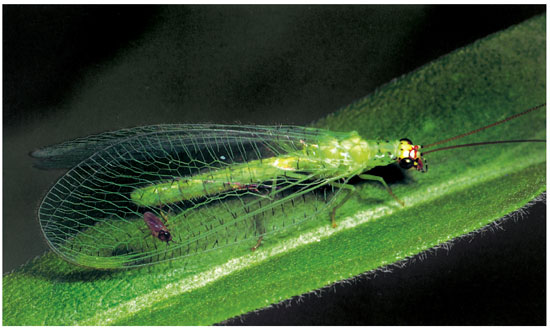
This Article From Issue
September-October 2006
Volume 94, Number 5
Page 470
DOI: 10.1511/2006.61.470
Insects: Their Natural History and Diversity. Stephan A. Marshall. 718 pp. Firefly Books, 2006. $95.
Like most people who work with insects, I cut my teeth identifying insects on what are called "dichotomous keys"—a series of bifurcating questions about a specimen that must be answered to ascertain the insect's family. I grew to love this system of identification in a masochistic sort of way, and I discouraged my students from "picture-booking" insects because I wanted them to learn the critical characteristics of each family. Along the way I filled students' heads with charming trivia about the spurious vein of syrphid flies, the foot-shaped anal loop of libellulid dragonflies and the split mesopleuron (a region of the thorax) of pompilid wasps. I never wondered much about alternative methods because this was how I had been taught. Yet whenever a student asked me how I knew that the moth at the blacklight trap was a tiger moth, I stumbled with a Gestalt definition of the taxon. I certainly didn't examine the wing veins of the living specimen.

From Insects: Their Natural History and Diversity.
Last year I heard a lecture by Bruce Kirchoff, a biologist at the University of North Carolina in Greensboro, about a Gestalt method of recognizing taxa. What he described fit rather well with the way I identify insect families in the field. In a nutshell, the Gestalt method suggests that the way we learn taxa is that, rather than focusing on critical characteristics, we use a type of holistic processing that allows us to recognize and categorize groups based on a constellation of characteristics and how they relate to one another. Often this processing goes on without much thought. We just "know" when we are looking at, say, a pentatomid bug, but we are not quite sure why.
This is the background with which I approached Stephen A. Marshall's book Insects: Their Natural History and Diversity. This guide to the identification and natural history of the insects of eastern North America contains incredibly detailed and beautiful photographs of representatives of the most common insect families. The preface outlines the way the book is meant to be used: You are first instructed to go to a set of pictorial flowcharts in the back of the text. These are dichotomous keys, to be sure, but they are in a refreshing new color-coded format with figures scattered generously across the page—right where you need them. No more "if yes go to couplet 48 on page 337" or "see figure 14G." Once you have an informed guess at the order and family, you are directed to a family section with detailed photographs, which richly depict the diversity of representatives of each family.
This is where Gestalt learning takes over. The family theme is immediately obvious, and the illustrations show its many variations. There is also a useful text description of each family, packed with the group's natural history. I cannot wait to try this text in my insect-biology class. Will my students learn their insect families as well as their predecessors did? I think they will, and I expect they will find the process much more enjoyable.
That all said, I do have a few problems with the book. I wish it contained more morphology, physiology, behavior and ecology at the beginning so that I could use it as the sole text for an introductory course in entomology. For years students of insect biology have been forced to purchase two texts each semester, and that requirement seems unlikely to change. Also, I think the author should consider separating the flowchart keys into a slim volume that a student could carry in the field, leaving the rest of the massive 7-lb. tome back in the lab to use as a reference.
Overall, though, this is an outstanding contribution to entomology. It will play an important role in the training of insect lovers for the foreseeable future.

American Scientist Comments and Discussion
To discuss our articles or comment on them, please share them and tag American Scientist on social media platforms. Here are links to our profiles on Twitter, Facebook, and LinkedIn.
If we re-share your post, we will moderate comments/discussion following our comments policy.